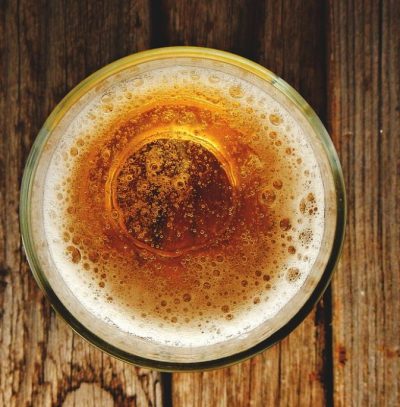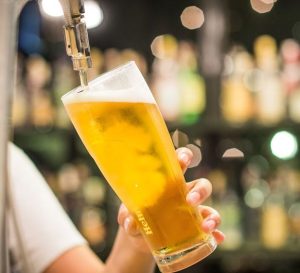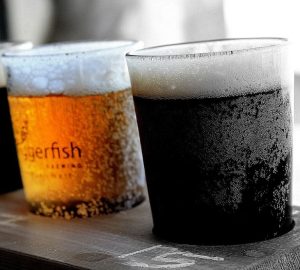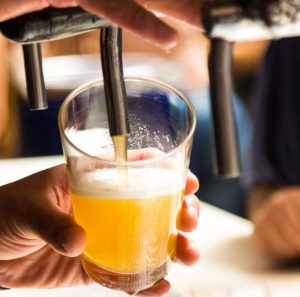Are you wondering how many beers can you drink and drive a car? It’s a question that many people have asked themselves, especially when they’re at a party or social gathering and want to enjoy a few drinks without risking their safety or the safety of others.
It is never safe to drink and drive. Alcohol impairs your ability to operate a vehicle safely and can lead to serious accidents and injuries. The legal limit for blood alcohol concentration (BAC) varies from country to country, but in general, it is illegal to drive with a BAC of 0.08% or higher.
However, it is important to note that even small amounts of alcohol can affect your ability to drive safely, and there is no safe amount of alcohol that you can consume and still be able to drive. The best practice is to not drink any alcohol if you are planning to drive.
How many beers can you drink and drive?
It is never safe to drink and drive. However, the legal blood alcohol limit for driving in the USA is 0.08%. This means that a person’s blood alcohol content (BAC) must be below 0.08% in order to legally operate a vehicle.
The number of beers that a person can drink before reaching the legal limit varies depending on a variety of factors, including their weight, gender, and the amount of time they have had to metabolize the alcohol.
For example, a 130-pound woman may reach the legal limit after just two beers, while a 200-pound man may be able to consume up to four beers before reaching the limit. It is important to note that these estimates are rough and may not accurately reflect an individual’s BAC.
The consequences of drinking and driving can be severe. Depending on the circumstances, a person who is caught driving under the influence may face criminal charges, including jail time, fines, and the loss of their driver’s license. They may also face civil consequences, such as increased insurance premiums and the loss of employment or educational opportunities.
If you have been drinking, it is best to wait at least an hour for each drink you have consumed before attempting to drive. This will give your body time to metabolize the alcohol and reduce your BAC.
What is the legal blood alcohol limit for driving in the USA?
The legal blood alcohol limit for driving in the United States is 0.08% or higher. This means that if a person’s blood alcohol concentration (BAC) is 0.08% or higher, they are considered legally drunk and may be charged with driving under the influence (DUI) or driving while intoxicated (DWI).
It is important to note that a person’s BAC can be affected by many factors, including their weight, gender, age, and how much alcohol they have consumed. Even a small amount of alcohol can impair a person’s ability to drive safely, so it is always best to avoid drinking and driving. If you do choose to drink, make sure to designate a sober driver or arrange for alternative transportation.
How many beers can a person drink before reaching the legal limit?
It is difficult to determine how many beers a person can drink before reaching the legal limit because there are so many factors that can affect a person’s blood alcohol concentration (BAC). These factors include a person’s weight, gender, age, and the rate at which their body metabolizes alcohol.
In general, it is safe to assume that a person’s BAC will increase by approximately 0.02% for every drink they consume. However, this is just an average and does not take into account the specific factors that can affect a person’s BAC.
It is important to remember that it is never safe to drink and drive. Even one drink can impair a person’s ability to drive safely, and the effects of alcohol can vary widely from person to person. The best way to avoid a DUI or DWI is to designate a sober driver or arrange for alternative transportation before drinking.
Recommended:
- How much alcohol is in a shot of tequila?
- Is rum stronger than vodka?
- How much alcohol is in patron?
What are the consequences of drinking and driving?
Drinking and driving can have serious and potentially fatal consequences. If a person is caught driving while intoxicated or under the influence of alcohol, they may face criminal charges and penalties, such as fines, jail time, and the loss of their driver’s license. In addition to the legal consequences, drinking and driving can also have serious personal and social consequences.
Also, drinking and driving can lead to car accidents, which can result in injuries or death to the driver, passengers, and other people on the road. Even if no one is injured in an accident, the damage to vehicles and property can be significant.
In addition to the physical consequences, drinking and driving can also have emotional and social consequences. A person who is charged with a DUI or DWI may face stigma and judgment from their friends, family, and community, and they may have difficulty finding employment or obtaining insurance in the future.
It is important to remember that the consequences of drinking and driving can be severe and long-lasting and that the best way to avoid these consequences is to never drink and drive. If you do choose to drink, make sure to designate a sober driver or arrange for alternative transportation.
How long should you wait after drinking before driving?
If you have consumed any amount of alcohol, you should wait until you are sober before driving. The amount of time it takes for alcohol to be metabolized and eliminated from your body can vary depending on a number of factors, including your age, sex, weight, and the amount of alcohol you have consumed.
In general, it takes about one hour for the body to metabolize one standard drink, but this can vary widely. It is always best to err on the side of caution and to have a designated driver, use a ride-sharing service, or take public transportation if you have been drinking.
Can you estimate your blood alcohol content (BAC) based on the number of beers you’ve consumed?
It is not accurate to estimate your blood alcohol content (BAC) based on the number of beers you have consumed, as there are many factors that can affect your BAC, including your age, sex, weight, and the amount of food you have eaten.
In general, the more alcohol you consume, the higher your BAC will be. However, even small amounts of alcohol can impair your ability to drive safely.
BAC is a measure of the concentration of alcohol in your blood, and it is expressed as a percentage. In the United States, it is illegal to drive with a BAC of 0.08% or higher for adults 21 and over. For commercial drivers, the legal limit is lower, at 0.04%. For drivers under 21, it is illegal to drive with any detectable amount of alcohol in their system.
To determine your BAC, you would need to use a breathalyzer or have a blood sample taken and tested in a laboratory. It is not possible to accurately estimate your BAC based on the number of beers you have consumed.
If you have been drinking and need to determine whether it is safe for you to drive, it is best to wait until you are sober or to use a designated driver.
Can you still be charged with a DUI if your BAC is below the legal limit?
It is possible to be charged with a DUI (driving under the influence) even if your blood alcohol concentration (BAC) is below the legal limit. The legal limit for BAC varies from country to country and state to state and is typically around 0.08% for adults who are 21 years or older.
However, it is important to note that even if your BAC is below the legal limit, you can still be charged with a DUI if you are impaired to the point that you are unable to safely operate a vehicle.
For example, if you have consumed alcohol or drugs that have impaired your ability to drive, you may be charged with a DUI even if your BAC is below the legal limit. Similarly, if you are under the influence of prescription or over-the-counter medications that impair your ability to drive safely, you may also be charged with a DUI.
It is important to understand that the legal limit for BAC is not a “safe” limit for driving. It is possible to be impaired at BAC levels below the legal limit, particularly if you are a young or inexperienced driver or if you have a low tolerance for alcohol. The best course of action is to avoid driving after consuming any amount of alcohol or drugs that may impair your ability to drive safely.
How does alcohol affect your ability to drive safely?
Alcohol impairs your ability to drive safely in a number of ways. Some of the most significant ways in which alcohol can impair your driving include:
1. Slowed reaction time: Alcohol can slow your reaction time and make it more difficult to react to changes in traffic or road conditions. This can make it more difficult to avoid accidents or to respond appropriately to other vehicles on the road.
2. Reduced coordination: Alcohol can also impair your coordination and make it more difficult to control your vehicle. This can make it harder to steer or brake and can increase the risk of accidents.
3. Decreased judgment and decision-making: Alcohol can also impair your judgment and decision-making abilities, which can lead to poor decisions while driving. For example, you may be more likely to make risky maneuvers or to drive at excessive speeds while under the influence of alcohol.
4. Increased drowsiness: Alcohol can also cause drowsiness and fatigue, which can make it more difficult to stay alert while driving.
5. Blurred vision: Alcohol can also cause blurred vision and other visual impairments, which can make it more difficult to see other vehicles or hazards on the road.
It is important to understand that these effects can occur at any level of alcohol impairment and that even small amounts of alcohol can significantly impair your ability to drive safely. It is always best to avoid driving after consuming alcohol or drugs that may impair your ability to drive safely.
What are the best strategies for avoiding a DUI?
There are several strategies you can use to avoid a DUI (driving under the influence) charge:
Don’t drink and drive:
The most effective way to avoid a DUI is to simply not drink and drive. If you are going to be consuming alcohol, make arrangements for a designated driver or use a ride-sharing service to get home.
Don’t get behind the wheel if you are impaired:
Even if your blood alcohol concentration (BAC) is below the legal limit, you can still be charged with a DUI if you are impaired to the point that you are unable to safely operate a vehicle. If you have consumed alcohol or drugs that have impaired your ability to drive, don’t get behind the wheel.
Know your limits:
It’s important to know how much alcohol you can safely consume and still be able to drive. This can vary based on a number of factors, including your weight, gender, and metabolism. If you are unsure of your limits, it is best to err on the side of caution and not drink at all.
Use caution when driving the morning after drinking:
It is possible to still have alcohol in your system the morning after drinking, which can impair your ability to drive safely. If you have consumed alcohol the night before, it is best to wait until it has completely metabolized before getting behind the wheel.
Be aware of the laws in your area:
The legal limit for BAC varies from country to country and state to state. Make sure you are aware of the legal limit in your area and adjust your drinking habits accordingly.
By following these strategies, you can help ensure that you are not charged with a DUI and that you are able to drive safely.
How can you get home safely if you’ve been drinking?
If you have been drinking and need to get home safely, there are several options available:
Use a ride-sharing service: Services like Uber or Lyft can provide a safe and convenient way to get home if you’ve been drinking. Simply download the app on your phone and request a ride.
Use public transportation: Many cities have public transportation options that can be used to get home safely. This might include buses, trains, or subways.
Call a taxi: Taxis can be a convenient option for getting home safely if you’ve been drinking. Simply call a local taxi company and request a ride.
Arrange for a designated driver: If you are going out with a group of people, consider designating a sober driver who will stay sober and drive everyone home safely.
Stay with a friend: If you are unable to get home safely on your own, consider staying with a friend or family member until you are sober enough to drive.
It is important to never drink and drive. The risks associated with drunk driving far outweigh any inconvenience or cost of finding a safe way home.
Conclusion
If you want to know how many beers can you drink and drive, then you are just in the right place. It is never safe to drink and drive. Even a small amount of alcohol can impair your ability to operate a vehicle safely.
The legal limit for blood alcohol concentration (BAC) varies from country to country and state to state, but it is generally around 0.08% or lower. However, it is important to note that this legal limit is not a safe limit and does not necessarily reflect the point at which a person’s ability to drive is impaired.




